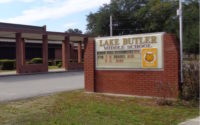John Fish steered his company, Suffolk Construction Co., through the Great Recession of 2009 with a cheerful optimism and plenty of ambition. He also set big goals for Suffolk, including investments in technology. Now that the good times are back, the Boston-based company continues to win big building construction-management contracts around the country, posting revenue of $2.5 billion in 2015. ENR Correspondent Scott Van Voorhis talked to Fish about Suffolk’s markets, millenials and technology.
What percentage of Suffolk’s work is now in either the tech or health-care sectors?
I would say the health-care and technology sectors are close to 25% of our portfolio. We are doing quite a bit of work with Amgen—and the barriers of working with a company like Amgen are high. We are working with GE Healthcare in Marlborough [Mass.], and we are working on GE’s new corporate headquarters in Boston. We are doing work on a new $700-million tower for Children’s Hospital [in Boston] and a $500-million All Aboard Intermodal center in Miami.
Has the balance between union and open-shop work changed much?
I would say that, today, 50% of our work is union and 50% is open shop. It was 75% union four years ago. In the San Francisco area and Boston, we are building union. In New York, it’s both union and nonunion. In the Southeast, it’s nonunion.
You have talked about more closely integrating technology into Suffolk’s operations. How so?
After the Great Recession, we really looked at our value proposition and tried to see what our competitive advantage was. It was relatively thin and thinner than where we wanted it to be. When you are competing as a commodity, the only way you can compete is to offer the best price—and sometimes the lowest price is not the best price. At the end of the day, what [matters] is the intrinsic value we are bringing to our clients. I invested heavily in technology, exploring the use of iPads and BIM modeling.
How are you doing it?
We came out with a brand-new vision for the company, transforming the construction experience by “building smart.” We use a VDC—virtual design and construction—model. The mechanical, electrical and structural—all the different disciplines are coordinated in one model. Before we build a job, we are building the job virtually first. Our value proposition and predictability in cost, value and scheduling are much higher now. If you are able to produce something more efficiently and predictably, you are taking the risk off the table.
OK, can you given an example of how Suffolk’s new “build smart” approach has paid off for you and your clients in dollars and cents?
As our models have become more accurate, our use of contingencies has dropped. We are seeing a 2% reduction in contingencies on projects because of the quality of the modeling. We also have been using a “virtual cave” that shows [clients] the three-dimensionality. Our ability to build it once and only once is more the norm than it is the exception. It is providing a sense of predictability, lowering our costs and increasing quality.
How is the next generation helping to make the company more tech-savvy?
We had to start changing the DNA of the company. People my age, 56, were not born with technology. We take senior-level people and partner them up with millennials, who were born with that DNA, and create a mentor-mentee relationship. We have allowed millennials to have a much [stronger] voice than they would have otherwise had at another type of company. We have probably at least 200 young people working with senior-level [managers.]
Is Suffolk still working mainly as an at-risk contractor, stipulated-price construction manager and design-builder or has that changed?
We are much more of a full-service company today. We are getting involved in projects much earlier than we ever did before and trying to create value for our clients with the different technologies.




Post a comment to this article
Report Abusive Comment